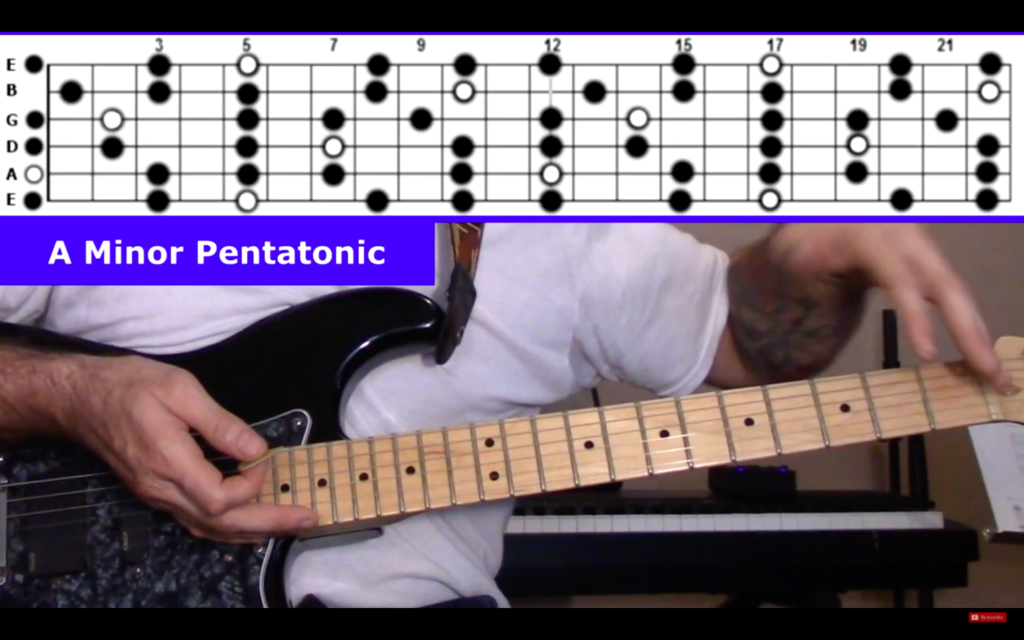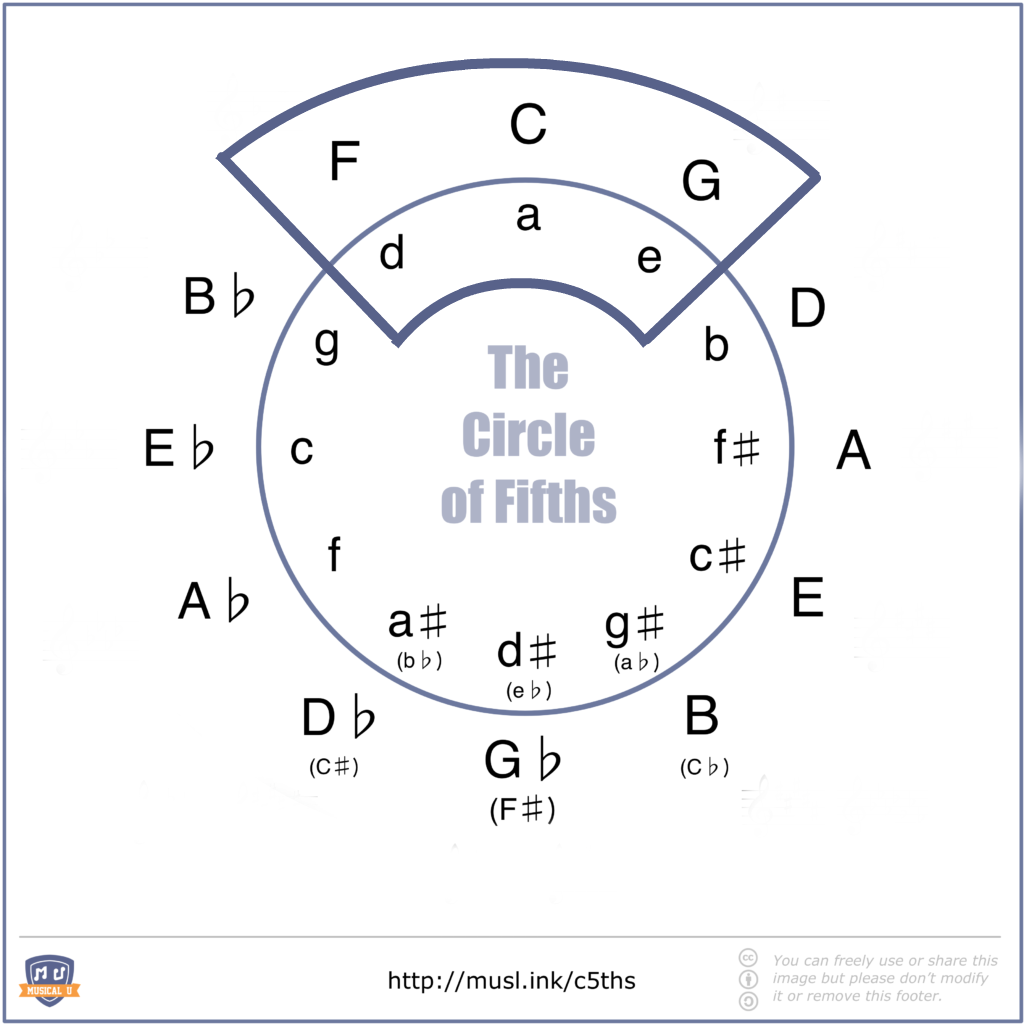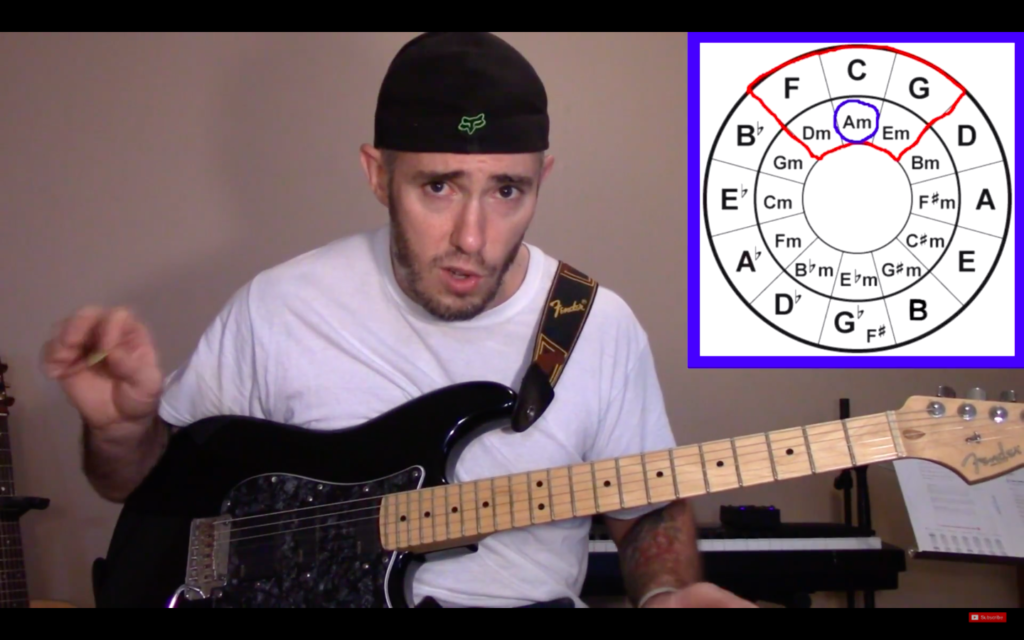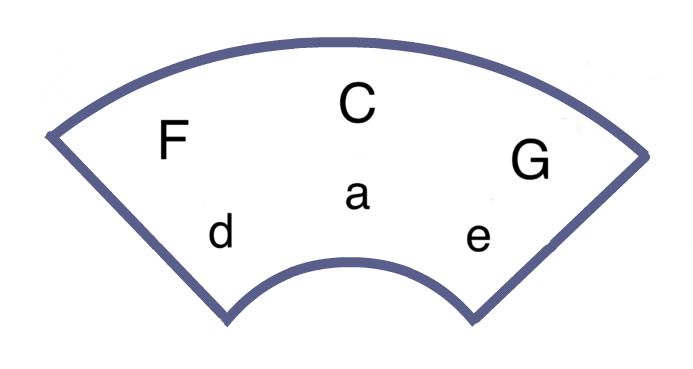If you’re just diving into the world of improvising with modes, it’s likely that you have a lot of questions. What is a mode, and how is it different from a key? How do you know what mode to use for soloing? What is the theory behind modes?
We have a guest expert on modal improvisation to answer all of these burning questions – and more…
Brian from Zombie Guitar here! Firstly, I wanted to say a thank you to Adam, Musical U’s Communications Manager, who has given me the opportunity to do a guest post for Musical U.
The topic of this lesson is beginning modal improvisation. This lesson is going to be divided into three parts:
- Part One: What the goal of using a mode, as opposed to just playing within a key?
- Part Two: Fretboard applications of modes. (We’re going to take a look at the minor pentatonic scale, and how to add notes to it in order to essentially create either the Aeolian mode or the Dorian mode.)
- Part Three: The theory behind modes and when to use them
So with that said, let’s get started:
Part 1: What’s in a Mode?
The number one most important thing that I want you to understand about modal improvisation is that modes are sounds. Modes have a specific sound that they produce, a specific feeling that is created with the music written in a particular mode. So the easiest way to understand this, even if you don’t know anything about modes at all, is to simply compare a major key to a minor key. These are, in fact, both modes! A major key is also known as the Ionian mode, and a minor key is also known as the Aeolian mode.
So if you take a piece of music and you write it within a major key and then ask the lead guitar player to solo, they would be soloing in the major scale as their improvisational framework. That piece of music would be written in the Ionian mode and it would sound happy, bright, and cheery. In other words, it would sound like a piece of music that is written in a major key – otherwise known as the Ionian mode!
A similar situation happens with minor keys. If you write a piece of music in a minor key, your lead guitar player’s improvisational framework would be the minor scale. That piece of music would have a significantly different sound from the major song – it would sound darker, sadder, and more blues-y.
7 Modes, 7 Sounds
It’s very, very obvious that the Ionian mode and the Aeolian mode sound significantly different from one another. If you can understand that concept, you already understand that modes have their own unique sound, with the Ionian and Aeolian being the most instantly recognizable.
Modes aren’t limited to just these two. Going beyond the simple Ionian and Aeolian modes, you still have five more to work with: Dorian mode, Phrygian mode, Lydian mode, Mixolydian mode, and Locrian mode.
Starting with Aeolian and Dorian
This means you have five other completely unique sounds from which a piece of music can be constructed, and you can use one particular mode as your scale or your improvisational framework to solo in. You can then write that piece of music in that particular mode, and it will take on a completely different sound from the Ionian and Aeolian modes.
You’re not necessarily modal playing when you’re playing in a major key or a minor key (respectively Ionian and Aeolian). You can call it modal playing, but for the purpose of the rest of this lesson, we’re going to look at the other modes: Dorian, Lydian, Mixolydian, Phrygian, and Locrian, as we can say that these are truly modal playing.
For this introductory lesson, I’ll be focussing on the Aeolian and Dorian modes, which are fairly straightforward to derive and understand.
If you refer to the instructional video, there were two modal improvisation examples at the beginning of the video. The first one was in A Dorian, and the second one was in A Aeolian. You’ll notice that they sounded significantly different from one another. While they shared the same root (A), they had uniquely different sounds. But the funny thing here is that the only difference between the Aeolian mode and the Dorian mode is one single note. Let’s look closer at that.
Part 2: Modes and the Minor Pentatonic on the Fretboard
We’ll do this by comparing the minor pentatonic scale to modes.
Many of you are likely familiar with the minor pentatonic scale. You have five notes before you repeat the starting note again. In order to turn the minor pentatonic scale into the natural minor scale, you add two notes.
The minor pentatonic scale simply uses five of the seven notes of the natural minor scale, otherwise known as the Aeolian mode. If you wanted to turn the Aeolian mode into the Dorian mode, the only difference is a single note! If you raise the sixth note of the natural minor scale (the Aeolian mode) by one half-step, the result is the Dorian mode.
There may only be a one note difference, but this change produces a significant difference in the sound. If you want to improvise in either of these modes, the resulting solos will also sound quite different from one another.
Though the demos at the beginning of the instructional video only show the modes using a single position, you can expand this concept to span the entire fretboard. Here’s a still from the video where you see your A minor pentatonic scale spanned across the entire neck of the guitar, where all the white dots indicate every instance of the note “A” on the guitar:

If you add your two notes to each of these positions and all the octaves on the neck of the guitar, the result is the A natural minor scale, otherwise known as the A Aeolian mode. In other words, if you hit nothing but these notes and you’re playing within this scale going up and down the neck of the guitar, the result is the A Aeolian mode.
You can then go ahead and alter that one note every sixth degree, and the result is A Dorian mode.
Part 3: The Mechanics of Modes
Now, let’s take a peek behind the curtain and look at some theory.
Before we dive in, one thing to keep in mind is that sometimes, you can break the rules and even though it’s not theoretically correct it may still be the best choice, so always let your ear be the guide. As an example, if you decide that you want to play the Dorian mode as your improvisational framework over the top of something which technically should not use the Dorian mode but you think it sounds good, go ahead and do it! If it sounds good to the ear, it’s great.
However, to give you a starting point, let’s look at some modal “rules”.
As a general rule of thumb, the more chords there are in a chord progression, the less likely it is to be modal, and the more likely it is to be in a major or minor key.
Modes typically work best over one, two, or maybe three chords, but once you start getting into anything more than three chords you’re probably not playing in a mode, but in a key.
Modes vs. Keys
Essentially the easiest way to explain this is by taking a look at the circle of fifths.
The circle of fifths conveniently groups all of the chords for each key in groupings of six, like so:

The keys of C major and A minor are relative to one another. Looking at the keys immediately clockwise and counterclockwise, your six diatonic chords are F, C, G, Dm, Am, and Em. The keys of G major and E minor are also relative to one another, and your six diatonic chords would be C, G, D, Am, Em, and Bm. Continuing further clockwise around the circle, the keys of D major and B minor are relative as well, with diatonic chords of G, D, A, Em, Bm, and F#m.
You can write pieces of music that use chords all within a single key. The more chords in a single key that you use, the more likely the song is going to be either major or minor.
The Aeolian mode and Dorian mode are both minor modes. This means they work best over single minor chords or over minor progressions. Again: the more chords you introduce into the progression, the more likely it is to be key-based and therefore, trying to apply a mode over the entire progression as your improvisational framework may not be the best course of action. In other words, the less chords there are, the more of a chance that a mode is going to work over the progression.
Soloing with Modes
The progressions that I was using to solo over in the beginning of the video tutorial were in minor keys. For example, for the Aeolian mode, I was soloing over the progression Am-G-F-G-Am. Then, when I was soloing with the A Dorian mode, it was over a two-chord progression that repeated: the Am chord to the D chord.
So, how did I know to use the Dorian mode over the Am-G-F-G-Am progression and the Aeolian mode over the Am-D progression? You could use your ear and see which one sounds better to you, but I like to actually analyze the chords and see what key they’re in and see where they fall within the diatonic chords for each key. And the easiest way to do that is to take a look back at the circle of fifths.
Soloing with Aeolian
I like to take a look and see what the chords are that I’m soloing over are. When I was soloing over the chord progression Am-G-F-G-Am, all those chords fell right into the grouping of six with the A minor at the center:

Because this grouping contained all the chords in the progression, it was pretty obvious that A minor (or A Aeolian mode) was the scale to use.
When examining minor chords in this way, the chord that falls right on the inner circle right in the center position of the grouping of six is known as the vi (minor) chord. For example, if you’re in the key of G major, look at the inner circle to see that the vi chord is Em. If you’re in the key of B, your vi (minor) chord is F#m.
When the vi (minor) chord is present along with some of the other chords within its grouping of six, you can be fairly certain the piece of music is in a minor key and you should be using the Aeolian mode. If the vi (minor) chord is not present but another minor chord is present within the grouping of six, along with some other chords in there, there’s a good chance that modal playing will start to come into play.
Soloing with Dorian
I was using the Dorian mode to solo over the two-chord progression. The ii (minor) chord within this grouping of six always falls on the inner circle in the counterclockwise direction. So, if that ii (minor) chord is present along with some other chords in the grouping of six but the vi (minor) chord is not present, that’s a good indication that the Dorian mode would apply. So, for the first example, we had A minor, we had F major, and we had G major – and these chords were right in that grouping of six.

A minor right in that center position, the vi (minor) chord was present along with some other chords in the grouping of six. A Aeolian mode was the mode to use.
In the second example, we have only two chords: the D major chord, and the A minor chord. Find the grouping of six where both chords are present.
Here, the key of G is in the center, and the inner circle counterclockwise position is the ii (minor) chord. The Am chord falls onto this position. We’re in this other grouping of six now, which contains the ii (minor) chord plus another chord. In this situation, you can assume that the Dorian mode is the perfect choice, and as we heard, it sounded great over this two-chord progression.
Soloing Smart
You can always analyze things in this manner. You can take a look at the chords that are being played by the rhythm section and ask yourself, “Okay. Here’s a grouping of six chords. Where are these chords coming from? Is the vi (minor) chord present?” If yes, that’s a good indication that the Aeolian mode is your best bet. If you look at a grouping of six and the vi (minor) chord is not present but the ii (minor) chord is (in the inner circle counter-clockwise position), along with some other chords within that grouping of six, it’s a safe assumption to say that the Dorian mode would apply.
Try analyzing some music you love to find some progressions that you can solo over with the Aeolian and Dorian modes. We guarantee you’ll find an ample selection, and the addition of a mode over the chord progression, your favourite song will go from great to wonderful!
The post Beginning Modal Improvisation, with Brian Kelly from Zombie Guitar appeared first on Musical U.
